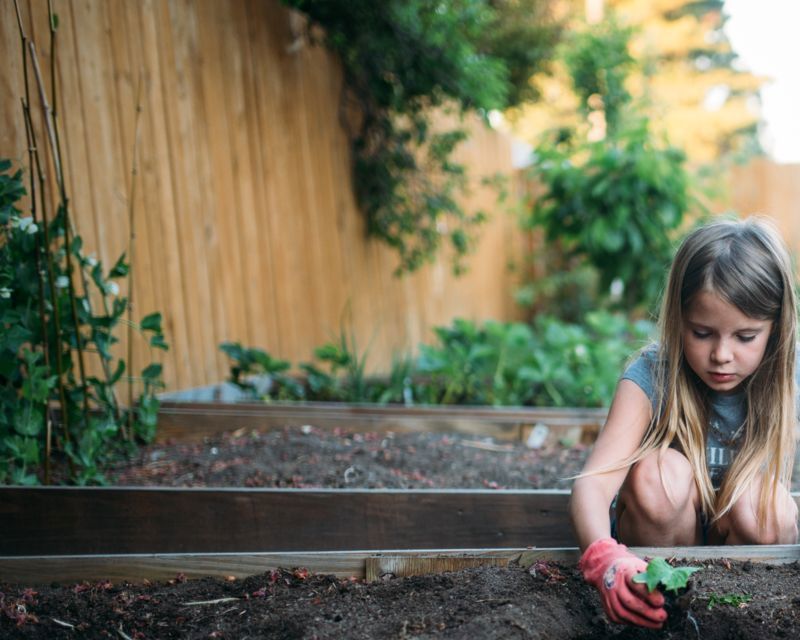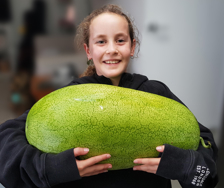Yates Account
Join now
Create a Yates account today!
Sign up to join the Yates Garden Club for monthly e-mails packed with seasonal inspiration, tips for success & exclusive promotions.
Plus if you’re a Garden Club member you can take part in the Yates Growing Community - a blog to share successes, get advice & win prizes in fun challenges along the way!

Forgot password
Enter the email address associated with your account, and we'll email you a new password.

A no-dig garden is just that – a garden bed made up of layers of organic materials that does not require backbreaking digging and tilling. Esther Deans, inventor of the ‘no-dig’ garden, recommends her method for all gardeners but says it is particularly useful for those physically unable to dig in the traditional fashion. Children, older gardeners, handicapped people or those confined to a wheelchair will find this method practical and toil-free.
Where to put a no-dig garden
A no-dig garden can go almost anywhere. It can be situated on a section of lawn or existing garden. It can be built over hard, rocky ground or even on top of a concrete slab. It is also possible to adapt the method to create an elevated garden. Use any type of frame or container, set at a convenient level, and line it with heavy-duty plastic punched with drainage holes and make the garden within the frame.

Making a no-dig garden
On the ground
- Select a site, preferably in a sunny position.
- Build a box frame with boards or bricks.
- Line the bottom of the frame with 5-10mm thick layer of newspaper (not cardboard or glossy magazine paper). Overlap the paper so there are no gaps.
- Cover paper with 10-15cm layer of lucerne mulch.
- Scatter organic fertiliser, like Yates Dynamic Lifter Organic Plant Food over the lucerne.
- Cover with 10-15cm of loose straw.
- Spread a 10-15cm layer of aged manure of the straw.
- Cover with 15-20cm layer of compost or imported garden soil
- Cover with a 10cm layer of pea straw or lucerne mulch.
- Make small holes in the mulch to make way for planting.
- Build a box frame with boards or bricks.
- On the bottom spread a layer of decaying leaves and small sticks, to a depth of 10 cm.
- Layer the organic materials as in the method above.
Tending to your garden
Do not dig a no-dig garden. It is both unnecessary and detrimental to the unique process. Simply replace new layers of compost, manure, lucerne and newspapers when necessary. Rotate your crops. For example, when leafy summer crops have been harvested the layers of the garden will have composted down and merged into each other. Add another layer of compost and plant autumn seeds such as carrots, onions, cauliflower or cabbage. Water during the early morning when evaporation is at its lowest. Weeding will be minimal because the organic materials added to the garden should be weed-free.
What to plant
Vegetable seeds and seedlings, flowering annuals, herbs, bulbs and strawberries all thrive in a no-dig garden. Use the following vegetable growing schedule as a guide to obtaining a rich seasonal bounty from your no-dig garden.
Vegetable sowing guide
This is a guide is general, please consult the Yates Garden Guide 79th Edition or a local horticulturist for more detailed information for your area.
SPRING
Sow seeds of French climbing or scarlet runner beans, beetroot, carrot, corn, melon, pumpkin, radish and summer squash. Sow seeds or plant seedlings of cabbage, capsicum, celery, cucumber, eggplant, lettuce, marrow, silverbeet, tomato and zucchini. Set in potato tubers.
SUMMER
Sow seeds of French beans, carrot, corn, beetroot and radish. Sow seeds or plant seedlings of Brussels sprouts, cabbage, cauliflower, capsicum, celery, tomato, leek, lettuce, silverbeet, tomato and vine crops.
AUTUMN
Sow seeds of broad beans, bok choy, carrot, Chinese cabbage, peas, radish and spinach. Sow seeds or plant seedlings of broccoli, kohlrabi, leek, lettuce and onion. Plant garlic cloves.
WINTER
Sow seeds of pea, snow pea and spinach. Sow seeds or plant seedlings of lettuce and onion.














Share
Share this article on social media